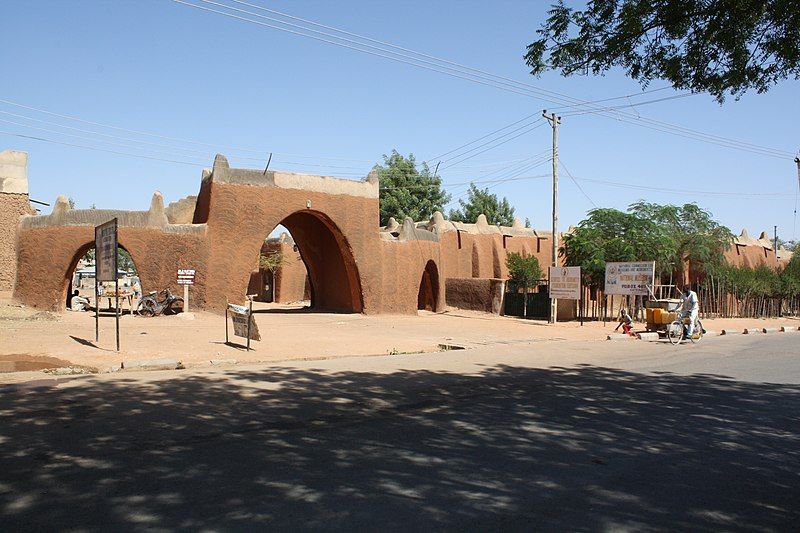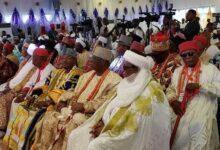
History of First Secondary School in Northern Nigeria
History of First Secondary School in Northern Nigeria – Education in Northern Nigeria underwent major changes under British colonial administration in the early 20th century. Before this time, Islamic education through Quranic schools was the dominant tradition, supplemented by informal vocational apprenticeship. The British believed introducing Western-style education would facilitate commerce, administration, and ‘civilizing’ influences.
Katsina College was founded as an all-boys secondary school to provide Western education to the sons of Northern Nigerian elites. Students were drawn from aristocratic Muslim families across the North. The school was modelled on British public schools, emphasizing academic rigor, moral discipline, and character development. Instruction was in English, though Arabic and Islamic studies were part of the curriculum.
👉 Relocate to Canada Today!
Live, Study and Work in Canada. No Payment is Required! Hurry Now click here to Apply >> Immigrate to CanadaAs the first modern secondary school established in the region, Katsina College held immense prestige. For Northern Nigerian families, it represented a path to economic and social advancement under colonial rule. Graduates often entered elite government jobs. The school thus played an integral role in nurturing an educated Northern Nigerian leadership class.InformationGuideNigeria

Origins of Katsina College
Katsina College was established in 1921 by the British to provide Western-style education in Northern Nigeria. Its founding was part of Britain’s “civilizing mission” approach to colonial administration.
The school was located in Katsina, an important pre-colonial Hausa state. Katsina’s emirate authorities donated the land and buildings that became the school’s original campus. This reflected the cooperation of Native Administration elites who supported colonial education initiatives.
Katsina College was modelled on British public schools. Students wore British-style uniforms and followed a rigorous academic routine. Instruction was in English, though Arabic lessons were provided. Corporal punishment was used to discipline students.
The school was initially designed to prepare the sons of elites for careers in the colonial Native Administration. However, it soon expanded its focus to broader Western education.15 Best High Fiber Foods You Should Eat
Read Also: The First Primary School in Nigeria

Pioneering Students and Faculty
Katsina College’s early students came from aristocratic Muslim families across Northern Nigeria. They included sons of emirs, viziers, clerks, judges, and other Native Authority officials.
👉 Relocate to Canada Today!
Live, Study and Work in Canada. No Payment is Required! Hurry Now click here to Apply >> Immigrate to CanadaNotable pioneering students included Sir Ahmadu Bello, who attended from 1922–23 before becoming Premier of Northern Nigeria. He later returned as a teacher.History of First Secondary School in Northern Nigeria
Other early luminaries were Abubakar Imam, the first Hausa editor of the Nigerian Broadcasting Corporation, and Nuhu Bamali, who became an ambassador and foreign affairs expert.
The school’s first headmaster was E.R.J. Hussey, a British education administrator. Early teachers included Europeans, South Africans, and Sierra Leoneans. Expatriate staff introduced students to the British curriculum and cultural influences.14 Best Award-Winning Chef
Later, Nigerians like Bello also served on the faculty. This paved the way for more indigenous hires as the school expanded.
Curriculum and Student Life
Katsina College’s curriculum was designed to provide a well-rounded British-style education. This included religious and moral instruction alongside academic subjects.
Students took classes in English, Latin, math, geography, history, agriculture, arts, and Islamic studies. Special emphasis was placed on character development and language acquisition.
The school enforced a strict daily routine inspired by British public schools. Students awoke before dawn for morning prayers and chores, followed by classes and supervised prep time in the evenings.
Sports like cricket, football, tennis, and boxing were encouraged to promote discipline and sportsmanship. Prefects helped enforce rules prohibiting fighting, cheating, alcohol, or smoking.
Corporal punishment was used liberally for student infractions. However, many alumni later viewed this positively as promoting self-control.
Student life also included clubs, societies, and inter-school competitions. Debating societies helped students engage intellectually outside the classroom.105 Good Morning My Love Messages
Read Also: First Secondary School in Southern Nigeria
Expanding Regional Education
In the 1930s, Katsina College began “feeder schools” to prepare students for its academic rigor. These included middle schools at Keffi, Kano, Katsina, and Zaria.
Provincial elementary schools at Bauchi, Maiduguri, and Sokoto also served as pipelines to Katsina College. This laid the foundations for mass education across northern Nigeria.
By the 1940s, enrollment had expanded to over 300 students. However, few graduated; the aim was to develop educated citizens rather than churn out certificates.200 Romantic Message for Her
Katsina College inspired the establishment of more regional secondary schools at Barewa College Zaria (1948) and Rumfa College Kano (1963). This expanded access to Western education across the North.
However, education remained limited; by 1952, the North only had 40 secondary schools vs. over 1,000 primary schools. Mass education was hindered by cultural conservatism and resource constraints.
Independence and Impact
After Nigeria’s independence, Katsina College was renamed Government College, Katsina, in 1962. This reflected its transition to a Nigerian national institution.
The school continued educating Northern elites after independence. Under Sir Ahmadu Bello as Premier, it received special status and funding as the “Eton of the North.”
Many alumni, like Abubakar Imam, pioneered mass media, education, law, and public service in the newly independent nation. They became part of Nigeria’s first generation of indigenous leaders.
Katsina College’s academic pedigree gave it an outsized influence on the Northern region and Nigerian education. By 1966, it had educated over 1,000 graduates who went on to shape Northern Nigeria.
The school remains open today, though its facilities have fallen into disrepair. Nevertheless, its legacy endures as the founding secondary institution in Northern Nigeria. It paved the way for regional educational development under colonial rule.
Read Also: First Secondary Schools in Northern Nigeria
Alumni Impact on Katsina College
As Northern Nigeria’s first secondary school, Katsina College educated generations of leaders who shaped the region. Its distinguished alumni made significant contributions in fields like academics, media, law, politics, and public service.NYSC Portal
| Name | Notable Achievements |
|---|---|
| Sir Abubakar Tafawa Balewa | First Prime Minister of Nigeria |
| Sir Ahmadu Bello | Premier of Northern Nigeria |
| Nuhu Bamalli | Diplomat, Ambassador and Foreign Affairs Expert |
| Abubakar Imam | First Hausa Editor of Nigerian Broadcasting Corporation |
| Mohammed Bello | First Northern Nigerian on National Court of Appeals |
| Sunday Awoniyi | Northern Nigeria Minister of Works |
| Shettima Kashim | Education Administrator, Northern Nigeria Minister of Local Government |
| Isa Kaita | Northern Nigeria Minister of Education |
| Aliyu Makaman Nupe | Emir of Bida |
| Muhammadu Dikko Yusufu | Emir of Katsina |
Several prominent Nigerian officials were Katsina College alumni. This included Sir Abubakar Tafawa Balewa, Nigeria’s first Prime Minister after independence. Others, like Nuhu Bamali, later served as foreign policy experts, diplomats, and ambassadors.
Alumni often returned to teach at Katsina College, reinforcing the school’s educational impact. Sir Ahmadu Bello, premier of Northern Nigeria, attended in the 1920s before coming back as an instructor. He later ensured the school received special status and funding to maintain standards.
Pioneering media figures such as Abubakar Imam, the first Hausa editor of the Nigerian Broadcasting Corporation, were Katsina graduates. Imam and others brought mass media to the region and popularised news and literature in indigenous languages.
In legal fields, the school produced Northern Nigeria’s first indigenous lawyers and judges under the British system. This included Justice Mohammed Bello, who in 1945 became the first Northerner on the National Court of Appeals.
Professionals in medicine, academia, and the sciences were also alumni. Katsina College graduates became vice chancellors at Ahmadu Bello University and other Northern institutions, furthering regional education.
This foundation allowed Katsina College to wield influence across public life in Northern Nigeria. By 1966, over 1,000 alumni occupied senior posts, shaping regional development.
Even after Nigeria’s independence, the school retained its elite status. Northern leaders ensured Katsina College continued to educate top civil servants and professionals to guide the new nation.
However, later years saw a decline in the school’s fortunes. Still, the legacy of its early alumni endures. Through their contributions to law, politics, culture, and society, these graduates had an outsized impact on modernizing Northern Nigeria.
Many alumni also provided charitable support to their alma mater over the decades. They assisted in areas like funding structures, facilities, and scholarships to benefit future generations.
Today, the Katsina College Old Students Association continues this mission of giving back. They provide mentorship opportunities and prizes to encourage today’s students to excel.
The organization also lobbies the government to revitalize the now dilapidated school infrastructure. This alumni engagement demonstrates a continuing spirit of public service.
In these ways, Katsina College alumni helped elevate both their alma mater and Northern Nigeria. The school produced generations of leaders whose work across fields put Northern Nigeria on the path of socioeconomic progress. Its educational impact endures through the achievements of its distinguished graduates.JAMB Portal
Read Also: Top 15 Well-Equipped Secondary Schools in Nigeria
Influence and Significance of Katsina College
As the first secondary school in Northern Nigeria, Katsina College exerted a profound influence on education, society, and development in the region. Its historical significance stems from its pivotal role in pioneering Western education in the North.
The school introduced elite Northern Nigerian families to the British curriculum, language, and cultural influences. This catalyzed new aspirations and opportunities under colonial rule. Katsina College graduates gained privileged access to elite government jobs and positions.
By educating the sons of emirs, clerks, judges, and other leaders, the school nurtured an anglophile Northern political and professional class. These future leaders engaged with modern governance and commerce on British terms.
Katsina College’s academic pedigree and selective intake burnished its reputation for excellence. Its early alumni, like Sir Abubakar Tafawa Balewa, formed the core of Nigeria’s first indigenous civil service and government institutions.
The school’s British-inspired curriculum also shaped education across Northern Nigeria. When graduates like Sir Ahmadu Bello later established more regional schools, they replicated Katsina College’s model.
By introducing Western-style learning, Katsina College accelerated modernization and set expectations for later educational expansion. Its disciplined culture and moral education molded values of restraint, character, and public service among Northern elites.
Even after independence in 1960, the school retained prestige as the “Eton of the North.” The Northern People’s Congress government prioritized Katsina College for funding and prominence.
However, this concentration of resources also meant mass education was slow to reach rural Northerners. Only in the late 1950s did primary schools begin proliferating across the region.
Nevertheless, as the genesis of secondary learning, Katsina College holds an unparalleled place in Northern Nigerian history. Its students were exposed to new languages, customs, and cosmopolitan influences.
The Islamic education many came with was supplemented by English literary studies, sciences, history and arts. This fusion produced modern leaders conversant in both Western and indigenous knowledge.
Pioneering alumni like Abubakar Imam demonstrate how Katsina College nurtured versatile professionals at ease in international and traditional spheres.
Such graduates spurred fields like journalism, law, and academics in the North. They made landmark contributions to Nigeria’s progress as a newly independent country.
While mass education took longer to spread, the foundations laid at Katsina College were indispensable. Its early students brought phenomenal changes to Northern Nigerian society through their continuing impact.
The school therefore occupies a seminal place in the cultural, intellectual, and political history of Northern Nigeria. As the region’s first secondary school, Katsina College made an indelible mark on Nigeria’s evolution into the modern era.
Read Also: Top 15 Oldest Secondary Schools in Nigeria
Conclusion
Katsina College was pivotal to early Western education and modernization in Northern Nigeria. As the first secondary school established in the region, it produced graduates who spearheaded progress in the colonial era and after independence. Its British curriculum and strict disciplinary culture shaped the students who led Northern Nigeria’s emergent professional class. Katsina College profoundly influenced the region by educating elites like Nigeria’s first Prime Minister, Sir Abubakar Tafawa Balewa.
While mass education came late to the North, institutions like Katsina College laid vital groundwork. Today, the region continues to benefit from these pioneering efforts to modernize education. Katsina College’s history provides an important perspective on Northern Nigeria’s educational development. Though now relatively obscure, the school marked a major milestone as the genesis of secondary education in the North. Its legacy persists through the professions, institutions, and ideas nurtured within its walls.
Check JAMB Result
Check and Confirm: How much is Dollar to Naira






